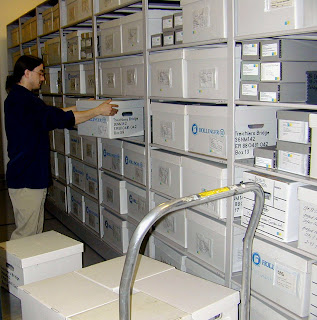As we all know, the goal of archaeology is to understand past cultural behavior – how people lived, how they organized themselves, their religious beliefs – and why their culture changed. We all agree that the environment can cause culture change and that it has affected cultural development. Obviously, climate (only one aspect of the environment) will affect the foods people eat and the types of food they can grow. Long term changes in climate, the end of the Ice Age, for example, had significant affects on the development of culture.
Technology and invention, such as the use and control of fire, the invention of the wheel, agriculture, or metal tools also had a significant affect on the lives of ancient people. Neighboring cultures also had their effects on others. For example, in the Upper Ohio Valley of western Pennsylvania, maize was being used nearly a thousand years prior to its use in the Delaware Valley. This is a complex issue, but part of the reason is that the cultures in the Upper Ohio were closely tied to the Mississippi Valley where the use of maize dates to at least 3000 years ago.
Population density is a fourth factor that some archaeologists consider to be very important in affecting the development of culture. But, unlike the environment, technology and the diffusion of ideas from other cultures, it is very difficult to trace. Some archaeologists argue that population density has had a very significant bearing on cultural developments and I would state that growing population density was the single most significant factor in affecting prehistoric cultures in Pennsylvania over the past 5000 years. On the other hand, many would argue that a combination of environmental and technological factors were of equal or greater importance. For example, the adoption of agriculture by the Indians of the Susquehanna Valley resulted in large settled villages, a tribal social organization and widespread warfare. I would say that an increasing population before the introduction of agriculture required Indians to adopt farming to feed their families. Over time, hunting and gathering simply could not support large numbers of people. There is good evidence that shows farming requires more labor intensive effort than hunting and gathering of wild foods. Assuming that people are basically lazy, they are not going to take on a new technology unless it is in some way, advantageous to do so.
To prove that population growth is a prime cause in cultural development, we must be able to demonstrate that population density is increasing to a critical point prior to technological development . And herein lies the problem. How do we determine absolute population size or even relative population density prior to written records?
Within a hundred years of their arrival Europeans were describing Indian villages and estimating the numbers of people they contained. Archaeologists have taken these numbers and applied them to prehistoric villages, specifically to the number of people per household which allows for hypothesizing population estimates for the period of time just prior to European contact. But what do we do for the period before the time people lived in relatively permanent hamlets and villages? How do we determine the number of people living in a nomadic hunting and gathering camp? In Pennsylvania 2000 years ago, there are very few examples of houses that have survived the ravages of time so it is impossible to extend this method very far into the distant past.
Another method that archaeologists use to reconstruct prehistoric demographics is to count the number of archaeological sites per time period. Sites can be roughly dated in time based on projectile point types and pottery types. Below is a graph using this method.

This graph illustrates an initial sharp population increase about 9000 years ago as the deciduous forest moves into Pennsylvania, followed by 4000 years of steady growth. At this time the rate begins to advance more rapidly. Between 1000 and 2000 years ago there seems to be a sharp population decline, however, most archaeologists believe this is not real. There are not many distinctive projectile point or pottery types for this time period (the Middle Woodland) so these numbers are artificially low. After this time, however, there is a very sharp rise in population during the Late Woodland Period when agriculture was developing across much of Pennsylvania. The graph needs to be broken into finer time periods but clearly there is evidence for a population increase prior to the adoption of agriculture.
Many, if not most archaeologists, do not accept this method as a valid procedure for documenting population change. We know that some projectile point types cover a very broad time range and some types crosscut other time periods. An example of this typological crosscutting is the triangular projectile point type. It is typically associated with the Late Woodland Period where such objects were used as arrow points. However, triangular forms were also used during the Late Archaic Period as atlatl dart points and there does not seem to be any way to determine the difference between these and their latter counterparts. Therefore, the Late Archaic numbers are likely too low and the Late Woodland numbers are likely too high.
Population density is clearly an important variable in the equation of determining cultural change. However, until archaeologists develop better methods for determining prehistoric population size density, the affects of this variable will largely remain speculative.
For more information, visit PAarchaeology.state.pa.us or the Hall of Anthropology and Archaeology at The State Museum of Pennsylvania .







